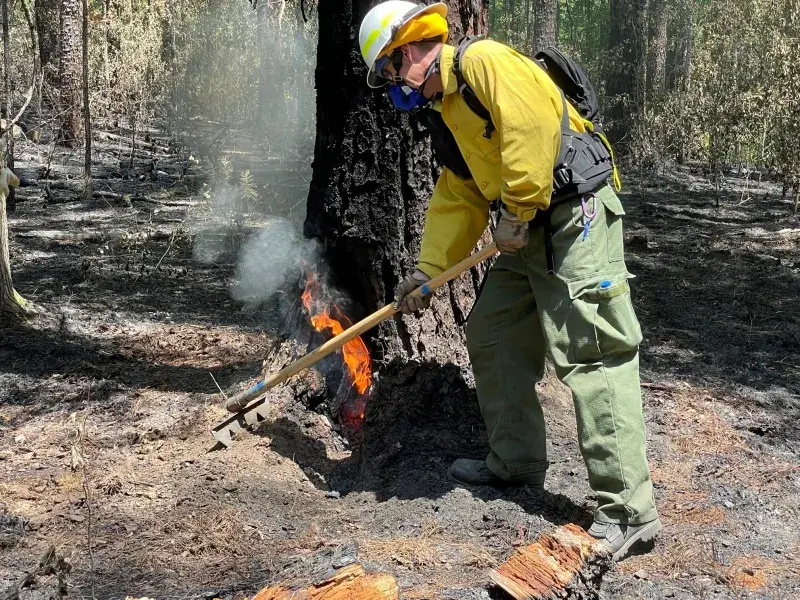In May 2022, an experienced group of firefighters joined the Science and Technology Directorate (S&T) at Harbison State Forest near Columbia, South Carolina. They gathered in that lovely southern forest, dense with trees and undergrowth, to test and evaluate a very promising new piece of firefighting equipment that could be a game changer for the thousands of wildland firefighters who battle wildfires each year.
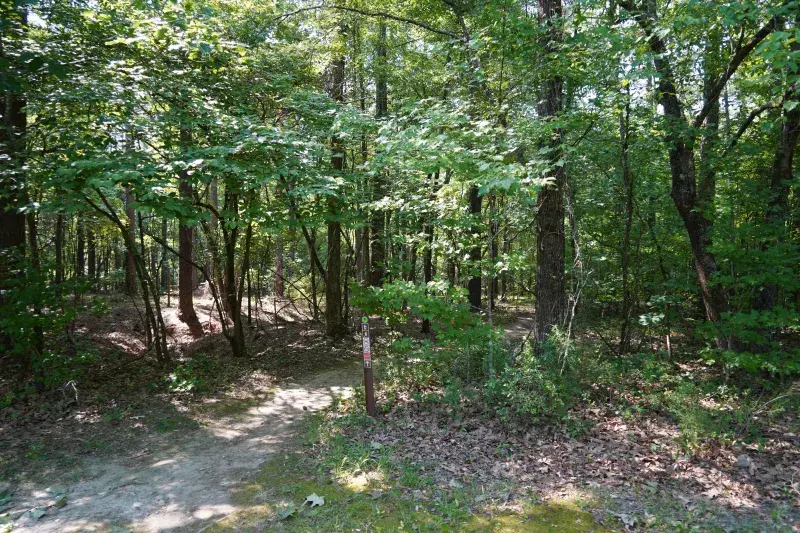
As it stands today, the brave wildland firefighters who trek into our wilderness areas each year to fight wildfires do so with very limited breathing protection. The soot, ash, and toxic gases that are created when materials burn is damaging their lungs every moment they are on the scene: on the fire line, in a bulldozer clearing fire breaks, or even sleeping and eating at smoky base camps.
S&T’s entire First Responder Capability mission area is driven by what responders say they need and the challenges they face. S&T translates this into actionable research and development programs and gathers their direct feedback at every step of the way, including testing prototype technologies in real-life settings to ensure they will perform as designed and fulfill the needs they are meant to address. “We were told by multiple wildland firefighters that they lack respiratory protection while they're out there in the wildland fighting fires,” said S&T Program Manager Kimberli Jones-Holt. “As far as the first responders are concerned,” she continued, “we make sure that we keep them involved all along in the process and that we don't go off on our own tangent and develop what we think that they may need and not what they really want.”
The experts gathered at Harbison State Forest were part of this ongoing collaboration that will ultimately turn their ideas into life-saving equipment. This is not a case of creating a solution in search of a problem; rather S&T is bringing the right solution to the problems faced by first responders, something they can put to work without compromising their ability to do this difficult and dangerous job.
The new technology that was being operationally field-tested in South Carolina is called the Wildland Firefighter Respirator (WFFR), funded by S&T and built by industry partner TDA Research, Inc.
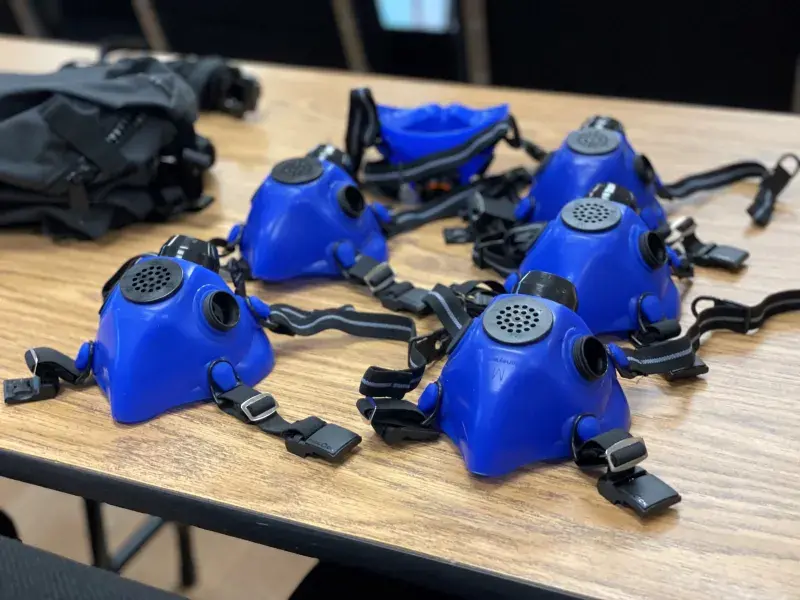
The WFFR system consists of a small blower with a HEPA filter and carbon filtration system. It has rechargeable batteries and can also use standard AA batteries found at any convenience store. It was designed with the mission environment in mind, using easily obtained household batteries as a backup so responders battling the elements would not have to worry about finding an electrical source to recharge it. The entire blower filter assembly is about the size of an old VHS tape. Then it has a hose and a small half mask. That’s pretty much it. It weighs a little over a pound and can be worn on the chest with a radio carrier or on the hip with a unit about the size and shape of the type of water bottle typically carried by first responders.
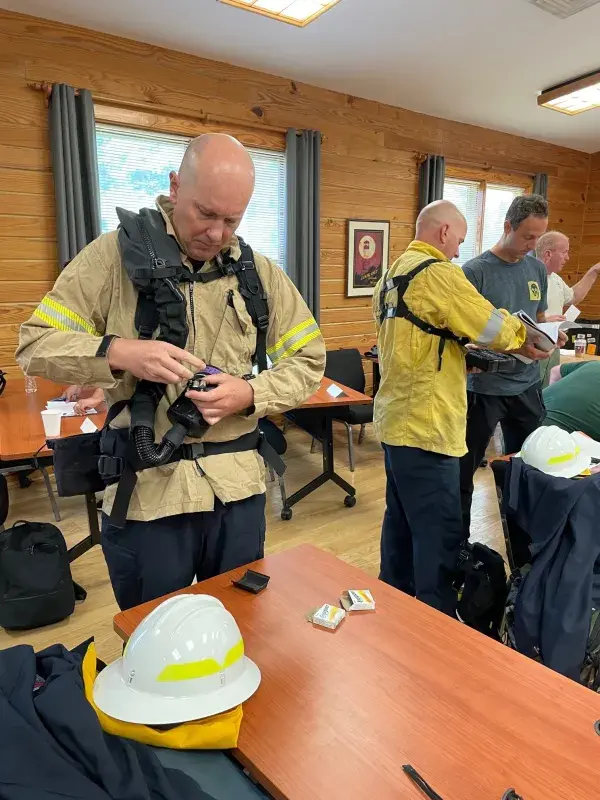
The operational field assessment started with everyone meeting up in a conference room on the site and learning how to wear and use the WFFR system. The field testers were experienced wildland firefighters from all over the country, exactly the type of responder who would wear it in the field. The tests were designed and administered by the National Urban Security Technology Laboratory (NUSTL), one of S&T’s five in-house national laboratories. NUSTL data collectors asked the firefighters about every aspect of the new technology, starting with the experience of putting it on and how it felt to wear.
Once they were suited up, the firefighters were escorted to the testing area and asked to perform tasks that simulate, as accurately as possible, wearing the WFFR in a real wildland fire event. There were five testing stations, each one allowing the WFFR to be used in a different kind of firefighting work. The first was cutting a fire line with picks and shovels. As they started to clear a fire break, the intermittent whirring of the WFFRs could be heard. “The WFFR is designed to blow air to the wearer,” said Drew Galloway, TDA research senior engineer and head of the WFFR design team. “It’s an ‘on-demand” system, so the harder you breathe the more cool filtered air the blower will send to you.”
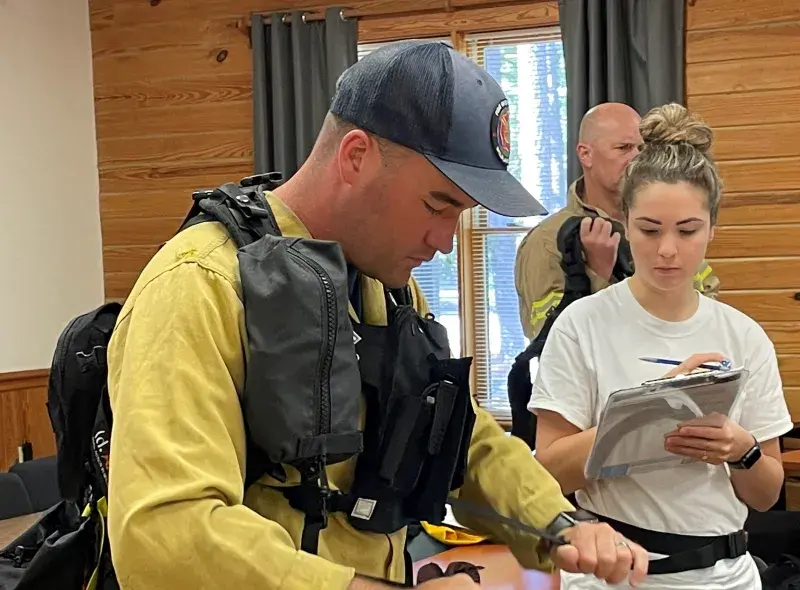
After each task the NUSTL data collectors stepped in get in-the-moment feedback from the first responders about how the WFFR performed. Then the group moved on to the next task. After digging fire line, the firefighters powered up a water truck and handled water hoses through the wild terrain. If there was anything they had trouble doing while wearing the device, NUSTL wanted to know about it.
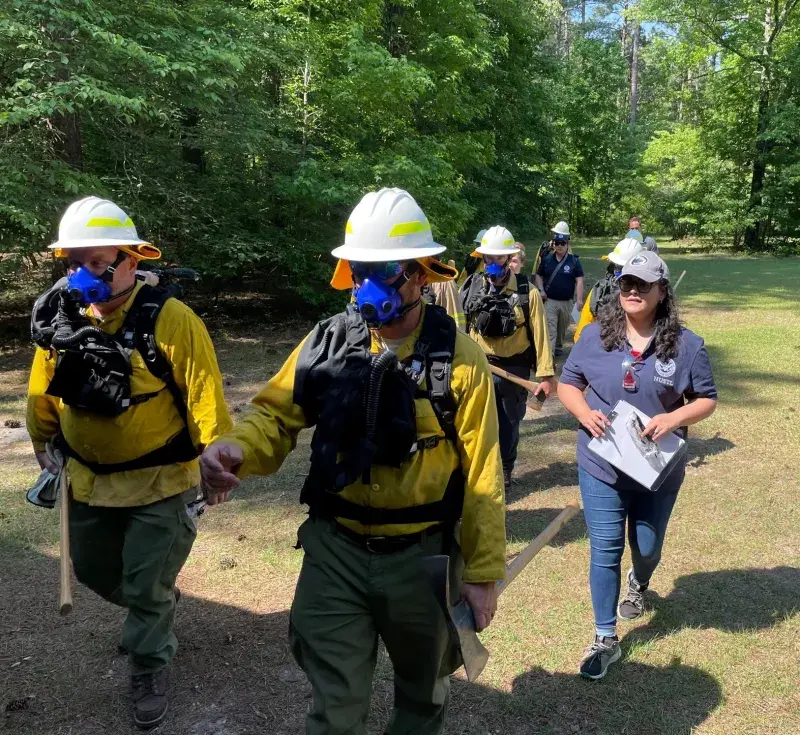
The next station brought home how dangerous this kind of work is. While wearing the respirators, the firefighters practiced deploying their emergency shelters, a safety device of last resort if they become trapped by fire and have to try to survive as it burns all around them. Watching them take cover under a thin piece of protective material as their WFFRs quietly hummed was sobering.
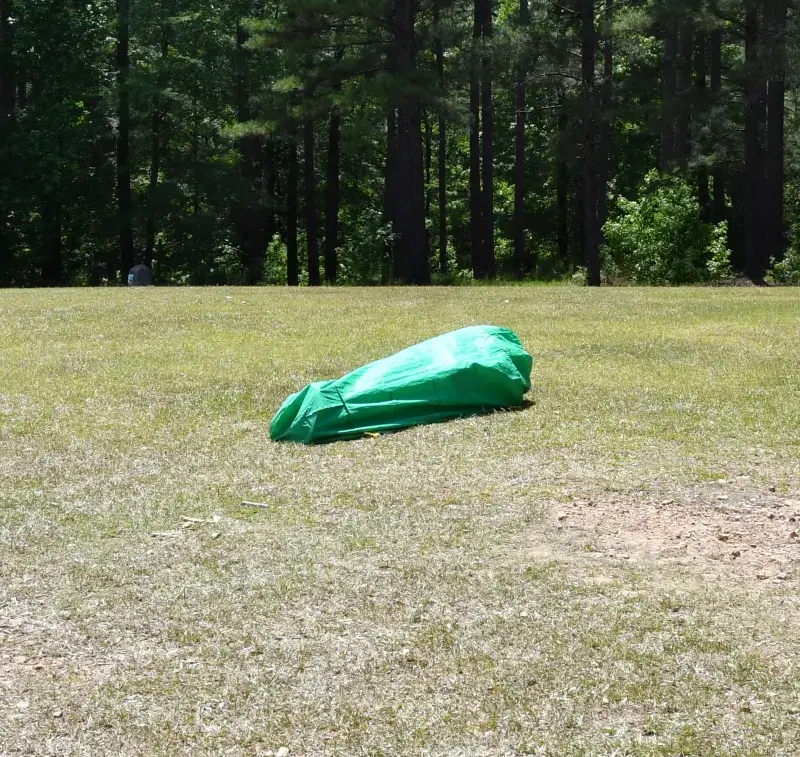
A large area of forest had been previously charred in a controlled burn in order to test the capabilities of the WFFR without actually starting an active fire. The firefighters operated saws, dug up burned leaf litter and other activities in an area still covered in ash and even inadvertently still burning in one tree. This allowed them to see how effective the system is at filtering the smoke and ash that quickly kicked up around them as they moved through the burned area.
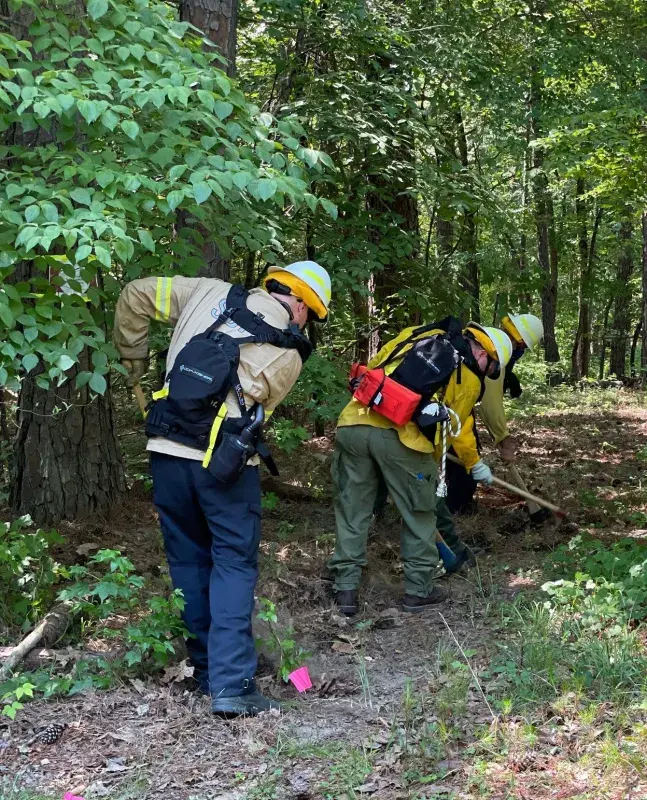
The last station was driving a small bulldozer of the type used to clear fire breaks. Driving a dozer with an open cab can expose the driver to a lot of smoke, ash, and dangerous combustion gases. The cab is small, and the WFFR needs to be effective without inhibiting the ability of the driver to operate the dozer and see all around.
“After the firefighters have performed each of the tasks, and everyone has given their feedback about how the system had performed, we'll return to NUSTL, and we’ll write the report with the data collectors,” said Hasan Shahid, test engineer at NUSTL and the lead for the data collectors assigned to the OFA, “The report will detail the strengths and weaknesses of the respirator and identify any opportunities for improvement.” NUSTL will then report back to TDA and S&T, and any adjustments and modifications that can be made to address issues learned during the tests will be incorporated into the final prototype. The operational field assessment report will be posted to the S&T website later this summer.
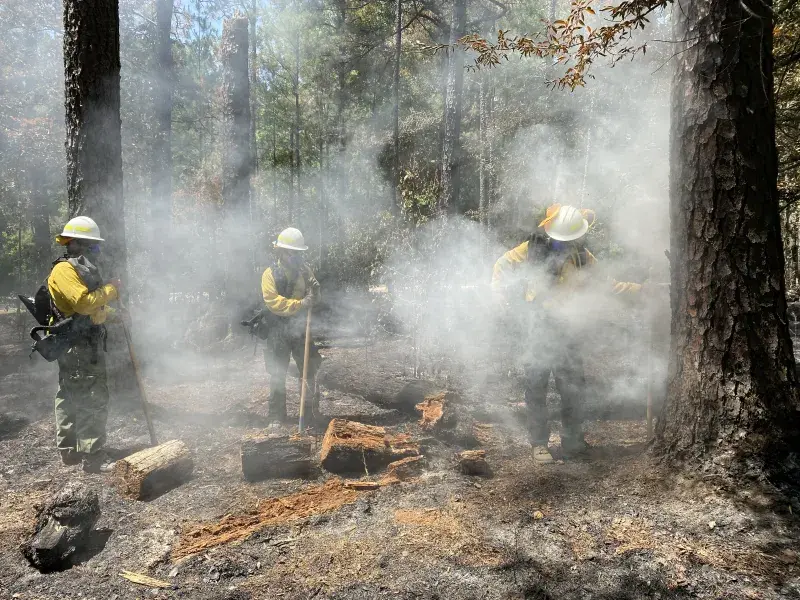
Overall, there was a great deal of enthusiasm for the role that the WFFR can play fighting future wildland fires. All of the firefighters participating have experienced the feeling of just trying to breathe in a place where help is a long way away, and the smoke is always going to be there. And as for any hesitation to try something new, firefighter Doug Mills, equipment manager for the South Carolina Forestry Commission had this to say, “I would tell my colleagues that, having put this on, you're looking out for your future. You want to have a long career here, and doing this, but also you want to have a life after this career. You want to be able to come to work and go home just as healthy as you showed up.”
S&T is working every day to protect the health of the brave wildland firefighters who are out there protecting all of us.
